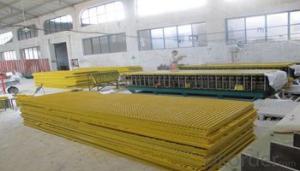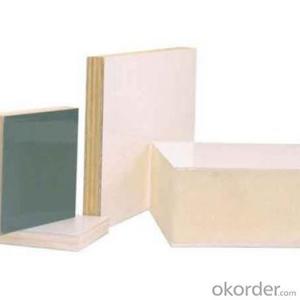FRP pultruded grating with Easy of maintenance and high quality for sales
- Loading Port:
- Tianjin
- Payment Terms:
- TT OR LC
- Min Order Qty:
- 4000 m.t.
- Supply Capability:
- 50000 m.t./month
OKorder Service Pledge
OKorder Financial Service
You Might Also Like
Item specifice
PRODUCT DESCRIPTION
Pultruded grating is made by a particular assembly process, which using “I” shape as its main load-bearing and special rod to go through the bearing bar. Pultruded grating include the standard grating and the custom grating, the custom grating can be designed to meet customer’s requirement or special using condition by changing the shape, size and space of the bearing bars, the surface can be covered with lozenge panel, grit panel, or added the anti-slippery sand directly.
FRP pultruded grating has the most characteristics of molded grating, but it has its distinct advantages, it has very high fiberglass content in the loading direction, so it has very high load capability, it has more superiority when used at wide span, so that the basic support will be decreased and the project cost will be reduced accordingly.
SPECIFICATION
The standard space between two crossbars is 6 inch or 12 inch.
Thickness (mm) | Bar width (mm) | Open space (mm) | Open rate (%) | Approx weight (kg/m |
25.4 | 15.2 | 22.8 | 60 | 13.2 |
25.4 | 15.2 | 15.2 | 50 | 15.9 |
25.4 | 15.2 | 10.1 | 40 | 18.5 |
25.4 | 40 | 10.8 | 21 | 14.5 |
38.1 | 15.2 | 22.8 | 60 | 15.8 |
38.1 | 15.2 | 15.2 | 50 | 19.1 |
38.1 | 15.2 | 10.1 | 40 | 22.4 |
50.8 | 25.4 | 25.4 | 50 | 16.6 |
50.8 | 25.4 | 12.7 | 33 | 21.1 |
CHOICE FOR PULTRUDED GRATING
Resin: GP resin, ISO resin, VE resin, Phenol resin
Color choice: Yellow, gray, green, custom color
Surface choice: Groove surface, grit surface, lozenge cover surface
FEATURES
a. Anti-corrosion and anti-rust
b. Light weight and high strength
c. Anti-flammable
d. Anti- fatigue
e. Safe and anti-slippery
f. Anti-ageing
g. Easy of maintenance
h. Excellent electromagnetism property
i. Good economic benefit
FIELDS SERVED
Sewage treatment,
water supply and drainage,
chemical industry,
oil industry,
power engineering,
pulp and paper,
construction engineering,
spinning, marine engineering.
APPLICATION
Operation terrace,
stair walkway,
ground floor,
trench cover,
sidewalk,
foot bridge,
equipment safety fence,
scaffold.
COMPANT DESCRIPTION
CNBM,China National Building Materials Group is a state-owned enterprise in charge of administrative affairs in china building materials industry. Established in 1984, CNBM is a large group corporation of building materials with total assets of 25 billion RMB and a total staff of 30,000.CNBM now owns 200 subordinating firms of solely owned and joint-venture companies.
CNBM International Corporation is one subsidiary of CNBM, we focus on offering good-quality products,professional service and complete solution to our customers. Strong delivery capacity, advanced technology& management, strong financing capability and excellent after-sale service are our advantages in sharing international market.
FAQ
Q1.What's your sample policy?
A:We can supply the sample if we have ready parts in stock, but the customers have to pay the courier cost.
Q2.Can you produce according to the samples?
A: Yes, we can produce or modify the products according to your request.
Q3.How do you deliver the goods to my country?
A:We can provide international express, such as DHL, EMS, UPS, FedEx, etc. We select air freight and sea freight upon your requests. Quotations if without mentioning the shipping costs are shipping fee excluded.
Q4.How much does it cost to ship to my country?
A:When you goanna to place an order, please contact us, because different country has different freight.
Q5.How to get the catalogue?
A:please contact us and tell us what you are looking for.
We will try our best to meet customers' demands. Welcome you come here to visit us. We sincerely welcome partners around the world to establish business cooperation with us on the basis of mutual trust, benefit and development.
PICTURES
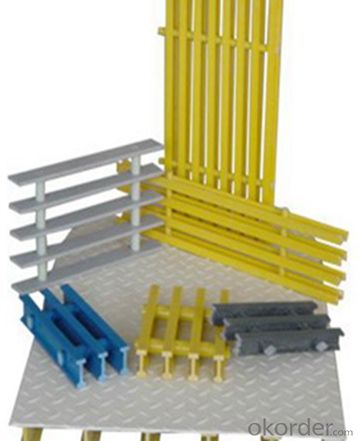
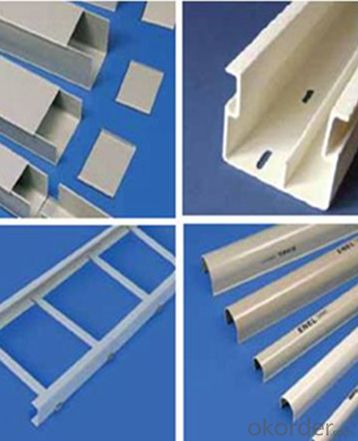
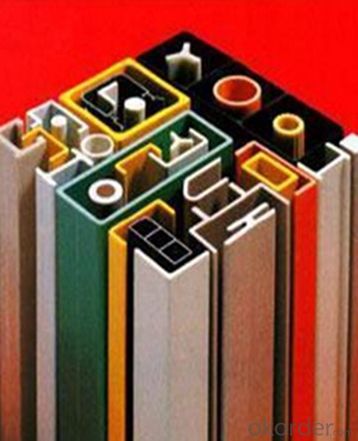
- Q:What is the tensile strength of FRP pultrusion profiles?
- The specific type and composition of materials used in FRP (Fiber Reinforced Polymer) pultrusion profiles can cause variations in their tensile strength. Generally, these profiles possess high tensile strength, often surpassing that of traditional construction materials like steel or aluminum. The range of tensile strength for FRP pultrusion profiles typically falls between 300 MPa (megapascals) and 1500 MPa or higher. However, it's worth noting that the tensile strength can be tailored and engineered to meet project requirements by adjusting the reinforcement materials, fiber orientation, resin matrix, and manufacturing process. Therefore, it is advisable to consult the manufacturer or supplier for accurate and specific information about the tensile strength of a particular FRP pultrusion profile.
- Q:How do FRP pultrusion profiles perform in coastal environments?
- FRP pultrusion profiles exhibit exceptional durability and perform remarkably well in coastal environments. The combination of fiberglass reinforcement and resin matrix renders them highly resistant to corrosion, moisture, and UV radiation, all of which are prevalent in coastal areas. These profiles boast superb resistance to saltwater, chemicals, and other harsh elements commonly encountered in coastal environments. The corrosion resistance of FRP pultrusion profiles ensures that they do not rust or deteriorate over time, unlike traditional materials such as steel or wood. This durability guarantees their long-lasting performance and minimizes the need for frequent maintenance or replacement. Moreover, the high strength-to-weight ratio of FRP pultrusion profiles makes them an ideal choice for coastal applications. They are lightweight yet robust, providing structural stability and dependability in the face of harsh coastal conditions. Additionally, their non-conductive nature eliminates the risk of electrical conductivity, which is crucial in coastal areas where saltwater and humidity can induce electrical corrosion. Furthermore, FRP pultrusion profiles can endure extreme temperature variations, withstanding both hot and cold climates without compromising their structural integrity or dimensional stability. This characteristic makes them suitable for coastal regions experiencing diverse weather conditions. In conclusion, FRP pultrusion profiles excel in coastal environments due to their corrosion resistance, durability, lightweight nature, and ability to withstand extreme weather conditions. Their performance and longevity make them a trustworthy choice for a range of applications, including marine structures, coastal infrastructure, and offshore installations.
- Q:Can FRP pultrusion profiles be used in the construction and building materials industry?
- Yes, FRP (Fiber Reinforced Polymer) pultrusion profiles can certainly be used in the construction and building materials industry. FRP pultrusion profiles are made by pulling continuous fibers through a resin bath and then into a heated die, which helps to cure the resin and shape the profile. One of the main advantages of FRP pultrusion profiles is their high strength-to-weight ratio. They are incredibly strong and durable, yet lightweight, making them an ideal choice for construction applications where weight reduction is desired. Additionally, FRP pultrusion profiles have excellent corrosion resistance, which is particularly beneficial in environments where moisture, chemicals, or harsh weather conditions may be present. This corrosion resistance extends the lifespan of building materials, reducing maintenance and replacement costs. FRP pultrusion profiles can be used in a wide range of construction applications, including structural components such as beams, columns, and trusses. They are also commonly used as reinforcements in concrete structures, providing additional strength and durability. In addition, FRP pultrusion profiles can be used for cladding, decking, handrails, ladders, and other non-structural elements in buildings. Furthermore, FRP pultrusion profiles offer design flexibility, as they can be easily customized and manufactured to specific shapes, sizes, and properties. This adaptability makes them suitable for a variety of construction projects, from small-scale residential buildings to large-scale industrial complexes. In summary, FRP pultrusion profiles are highly suitable for the construction and building materials industry due to their high strength-to-weight ratio, corrosion resistance, design flexibility, and versatility.
- Q:What are the maintenance requirements for FRP pultrusion profiles?
- The maintenance requirements for FRP (Fiber Reinforced Polymer) pultrusion profiles are generally quite low. FRP pultrusion profiles are known for their durability and resistance to corrosion, making them a low-maintenance option for various applications. However, there are a few key maintenance practices that can help prolong the lifespan and ensure optimal performance of FRP pultrusion profiles. 1. Regular Cleaning: Periodic cleaning is important to remove any dirt, dust, or debris that may accumulate on the surface of the profiles. This can be done using a mild detergent solution and a soft brush or cloth. Avoid using abrasive cleaners or materials that may scratch the surface. 2. Inspection: Regular visual inspections should be carried out to identify any signs of damage or wear. Inspect the profiles for cracks, chips, delamination, or any other visible defects. If any issues are detected, they should be addressed promptly to prevent further damage. 3. UV Protection: FRP pultrusion profiles are generally resistant to UV radiation, but prolonged exposure to direct sunlight can eventually cause some degree of degradation. Applying a UV protective coating or using a UV-resistant paint can help minimize the effects of UV exposure and extend the lifespan of the profiles. 4. Lubrication: If the pultrusion profiles have moving parts or connections, such as hinges or joints, applying a suitable lubricant can help ensure smooth operation and prevent friction-related issues. It is important to use lubricants that are compatible with FRP materials to avoid any adverse chemical reactions. 5. Repair and Replacement: In case of any significant damage or wear, it may be necessary to repair or replace the affected sections of the FRP pultrusion profiles. This should be done by trained professionals who have experience working with FRP materials to ensure proper repair techniques and maintain structural integrity. Overall, while FRP pultrusion profiles require minimal maintenance, regular cleaning, inspection, and addressing any issues promptly are key to ensuring their longevity and optimal performance. Following these maintenance practices can help maximize the lifespan of FRP pultrusion profiles and maintain their structural integrity over time.
- Q:Are FRP pultrusion profiles resistant to chemicals used in semiconductor manufacturing?
- Yes, FRP (Fiber Reinforced Plastic) pultrusion profiles are generally resistant to the chemicals used in semiconductor manufacturing. FRP is known for its excellent chemical resistance, making it a suitable material for various industrial applications, including the semiconductor industry. The composite structure of FRP, consisting of a reinforced fiber matrix embedded in a polymer resin, provides resistance to a wide range of chemicals, including acids, alkalis, solvents, and other aggressive substances commonly used in semiconductor manufacturing processes. This resistance ensures that FRP pultrusion profiles can withstand exposure to these chemicals without significant degradation or corrosion, making them a reliable choice for use in semiconductor manufacturing environments. However, it is always advisable to consult the specific chemical resistance data provided by the manufacturer to ensure compatibility with the exact chemicals and concentrations used in a particular semiconductor manufacturing process.
- Q:Are FRP pultrusion profiles resistant to wear or abrasion?
- FRP pultrusion profiles exhibit exceptional durability against wear and abrasion due to the integration of reinforcing fibers, predominantly glass or carbon, and a plastic resin matrix. This combination results in a highly robust material that can endure rigorous utilization. Moreover, the pultrusion process guarantees a uniform composition, with fibers uniformly dispersed throughout the profile, thereby augmenting its resistance to wear and abrasion. Furthermore, FRP pultrusion profiles can be customized with specific additives or surface treatments to further heighten their ability to withstand wear and abrasion, rendering them suitable for diverse applications across industries such as construction, transportation, and marine.
- Q:Can FRP pultrusion profiles be used in the construction of chemical processing equipment?
- Yes, FRP (Fiber Reinforced Plastic) pultrusion profiles can be used in the construction of chemical processing equipment. FRP offers excellent resistance to corrosion, chemicals, and high temperatures, making it a suitable material for such applications. The pultrusion process ensures that the profiles are strong, durable, and have consistent properties, making them reliable for use in chemical processing equipment where resistance to corrosive substances is crucial.
- Q:How do FRP pultrusion profiles perform in extreme heat temperatures?
- FRP pultrusion profiles are known for their excellent performance in extreme heat temperatures. The unique combination of materials used in the pultrusion process, such as fiberglass reinforcement and thermosetting resin matrix, imparts remarkable heat resistance properties to the profiles. One of the key advantages of FRP pultrusion profiles is their ability to maintain dimensional stability under high temperatures. Unlike traditional materials like steel or aluminum, which can expand or deform when exposed to extreme heat, FRP profiles retain their shape and structural integrity. This makes them highly reliable in applications where temperature fluctuations are common or where the profiles are exposed to intense heat. Additionally, FRP pultrusion profiles exhibit excellent thermal insulation properties. They have a low thermal conductivity, which means they can effectively resist the transfer of heat. This is beneficial in situations where heat needs to be controlled or isolated, preventing the profiles from becoming excessively hot. Furthermore, FRP pultrusion profiles have a high heat distortion temperature (HDT). HDT is the temperature at which a material starts to deform under a specific load. The HDT of FRP profiles is typically much higher than that of other materials, allowing them to withstand extreme heat without losing their structural integrity. Overall, FRP pultrusion profiles are well-suited for use in extreme heat temperatures. Their ability to maintain dimensional stability, resist heat transfer, and withstand high temperatures makes them a reliable choice for various industries, including aerospace, automotive, and infrastructure.
- Q:Can FRP pultrusion profiles be used in the water and wastewater treatment industry?
- Yes, FRP (Fiber Reinforced Polymer) pultrusion profiles can be used in the water and wastewater treatment industry. FRP pultrusion profiles are highly durable, corrosion-resistant, and have excellent mechanical properties, making them suitable for various applications in the water and wastewater treatment industry. One of the main advantages of FRP pultrusion profiles is their resistance to corrosion. Water and wastewater treatment facilities often deal with aggressive chemicals, high humidity, and corrosive environments. Traditional materials like steel or wood may deteriorate and require frequent maintenance or replacement. However, FRP pultrusion profiles are specifically designed to withstand harsh conditions without corrosion, ensuring long-term performance and reducing maintenance costs. Additionally, FRP pultrusion profiles offer excellent strength-to-weight ratio, making them ideal for structural applications in water and wastewater treatment facilities. They can be used as walkways, handrails, grating, ladders, and other structural components. The lightweight nature of FRP profiles allows for easy installation and minimizes the load on the supporting structures. Furthermore, FRP pultrusion profiles are non-conductive, providing an added safety benefit in water and wastewater treatment facilities. This property is particularly important when dealing with electrical equipment or applications near water sources, reducing the risk of electrical hazards. Moreover, FRP pultrusion profiles can be customized to meet specific design requirements, including different shapes, sizes, and colors. This flexibility allows for greater design freedom, ensuring that the profiles can be tailored to fit the specific needs of water and wastewater treatment projects. Overall, the use of FRP pultrusion profiles in the water and wastewater treatment industry offers numerous advantages, including corrosion resistance, high strength, lightweight, non-conductivity, and design flexibility. These qualities make FRP profiles a reliable and cost-effective choice for various applications in this industry.
- Q:Can FRP pultrusion profiles be used in the construction of train or subway platforms?
- Yes, FRP pultrusion profiles can be used in the construction of train or subway platforms. FRP (Fiber Reinforced Polymer) offers excellent strength, durability, and corrosion resistance, making it suitable for high-traffic areas like train or subway platforms. Additionally, FRP pultrusion profiles can be customized to meet specific design requirements, making them a versatile choice for platform construction.
1. Manufacturer Overview |
|
|---|---|
| Location | |
| Year Established | |
| Annual Output Value | |
| Main Markets | |
| Company Certifications | |
2. Manufacturer Certificates |
|
|---|---|
| a) Certification Name | |
| Range | |
| Reference | |
| Validity Period | |
3. Manufacturer Capability |
|
|---|---|
| a)Trade Capacity | |
| Nearest Port | |
| Export Percentage | |
| No.of Employees in Trade Department | |
| Language Spoken: | |
| b)Factory Information | |
| Factory Size: | |
| No. of Production Lines | |
| Contract Manufacturing | |
| Product Price Range | |
Send your message to us
FRP pultruded grating with Easy of maintenance and high quality for sales
- Loading Port:
- Tianjin
- Payment Terms:
- TT OR LC
- Min Order Qty:
- 4000 m.t.
- Supply Capability:
- 50000 m.t./month
OKorder Service Pledge
OKorder Financial Service
Similar products
New products
Hot products
Related keywords
